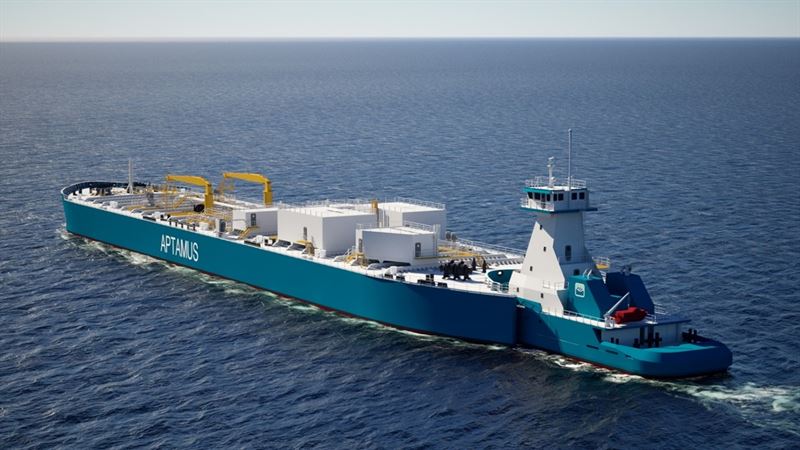Classification society ABS has awarded approval in principle (AIP) to Overseas Shipholding Group, Inc. (OSG) for its groundbreaking liquefied carbon dioxide (LCO2) barge design.
The vessel, designed as an articulated tug and barge unit (ATB), will be the first of its kind in the United States dedicated to carbon capture projects. The design features medium pressure LCO2 Type-C tanks with a cargo capacity of 20,000 metric tons.
This development is part of the broader Tampa Regional Intermodal Carbon Hub (T-RICH) project, which aims to handle emissions from Florida industries for transport to regional sequestration sites. The T-RICH facility at Port Tampa Bay is designed to process two million metric tons of CO2 annually, with potential for future expansion.
The project received substantial backing in April 2024 when OSG secured a $3 million grant from the U.S. Department of Energy for the vessel’s design and engineering. This followed an earlier DOE grant in December 2023 for the T-RICH development.
“The safe transportation of CO2 plays a vital role in the carbon value chain, and ABS is proud to use our expertise as the world’s leading classification society for gas carriers to support this milestone project for U.S. operations,” said Gareth Burton, ABS Senior Vice President, Global Engineering.
The project addresses a critical infrastructure gap in Florida, which ranks fourth nationally in CO2 emissions from power generation and industrial facilities but lacks pipeline infrastructure for CO2 transport. The ATB will transport captured CO2 from the T-RICH terminal to sequestration sites in the northern Gulf of Mexico.
Kent Merrill, Aptamus Vice President of Marine Projects, highlighted that the design team is incorporating green technologies, including plans for the tug to utilize green methanol or other sustainable fuels.
According to Sam Norton, OSG’s President and CEO, carbon capture and storage systems are expected to play a crucial role in achieving U.S. carbon reduction goals, potentially contributing up to 30% of total emission reductions needed for net zero by 2050.
The project is anticipated to create hundreds of new jobs while accelerating the adoption of carbon emission reduction plans among Florida’s industrial facilities.

 Join The Club
Join The Club











